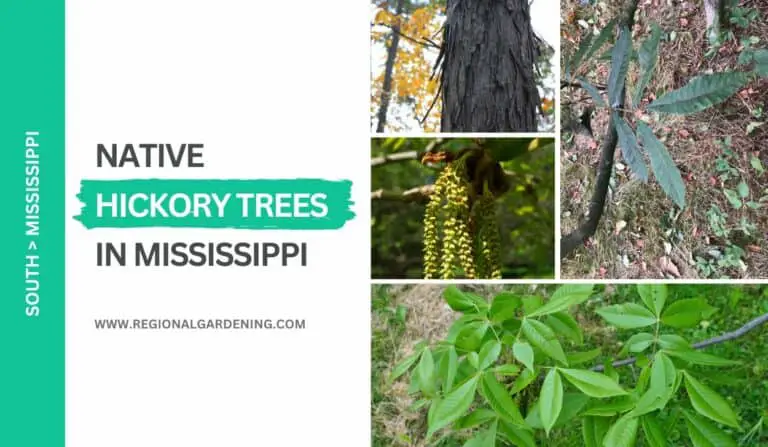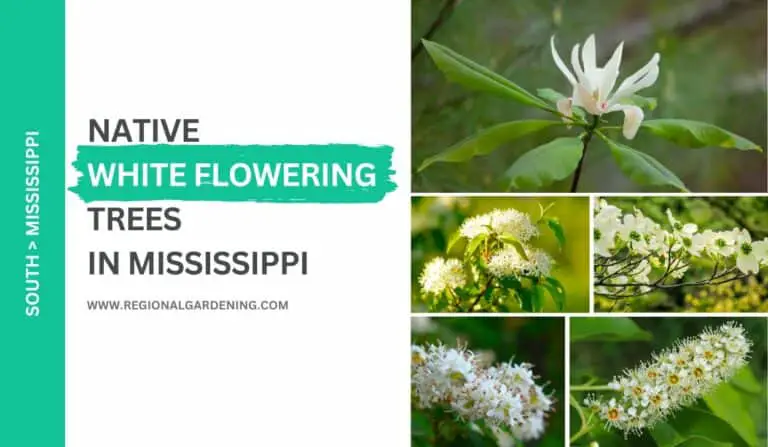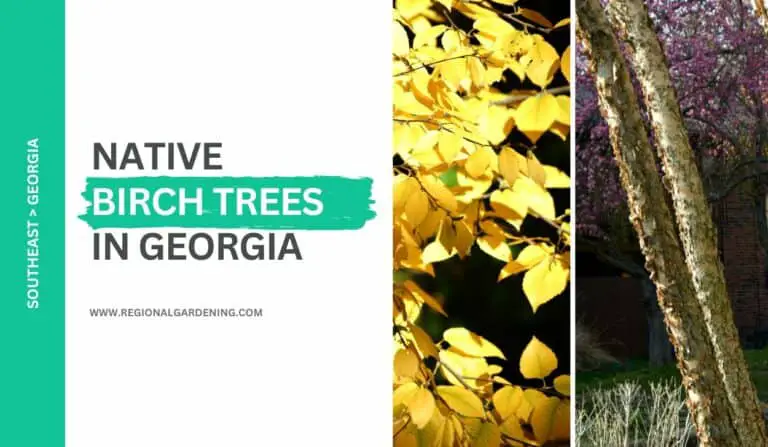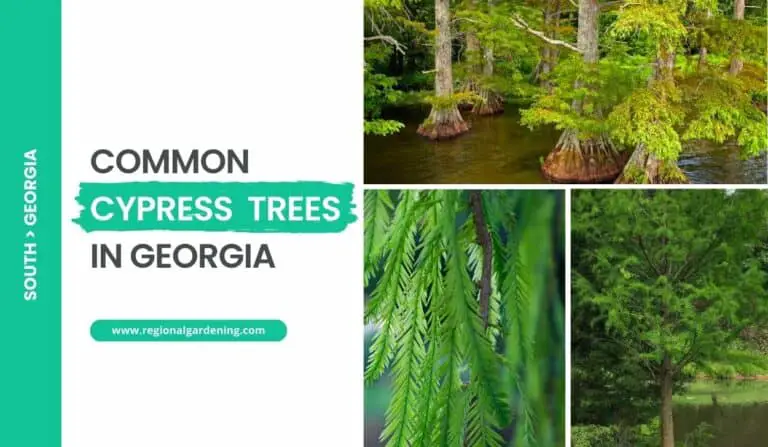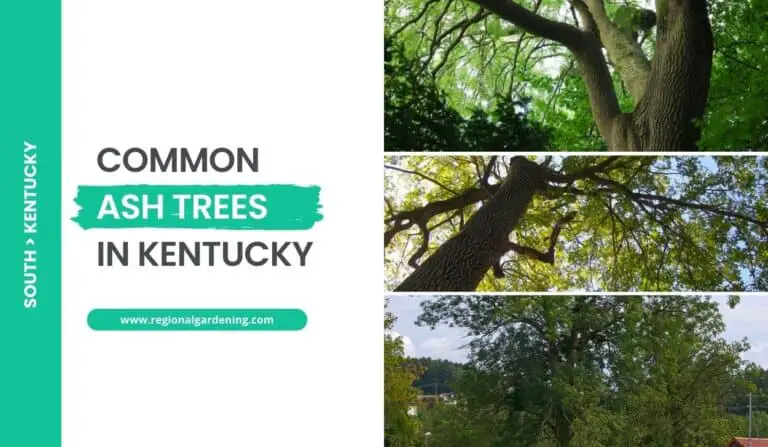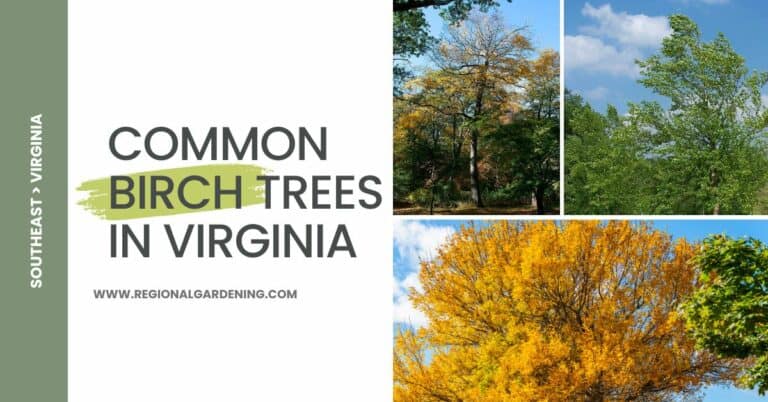7 Common Pine Trees In Kentucky (Photos & ID Guide)
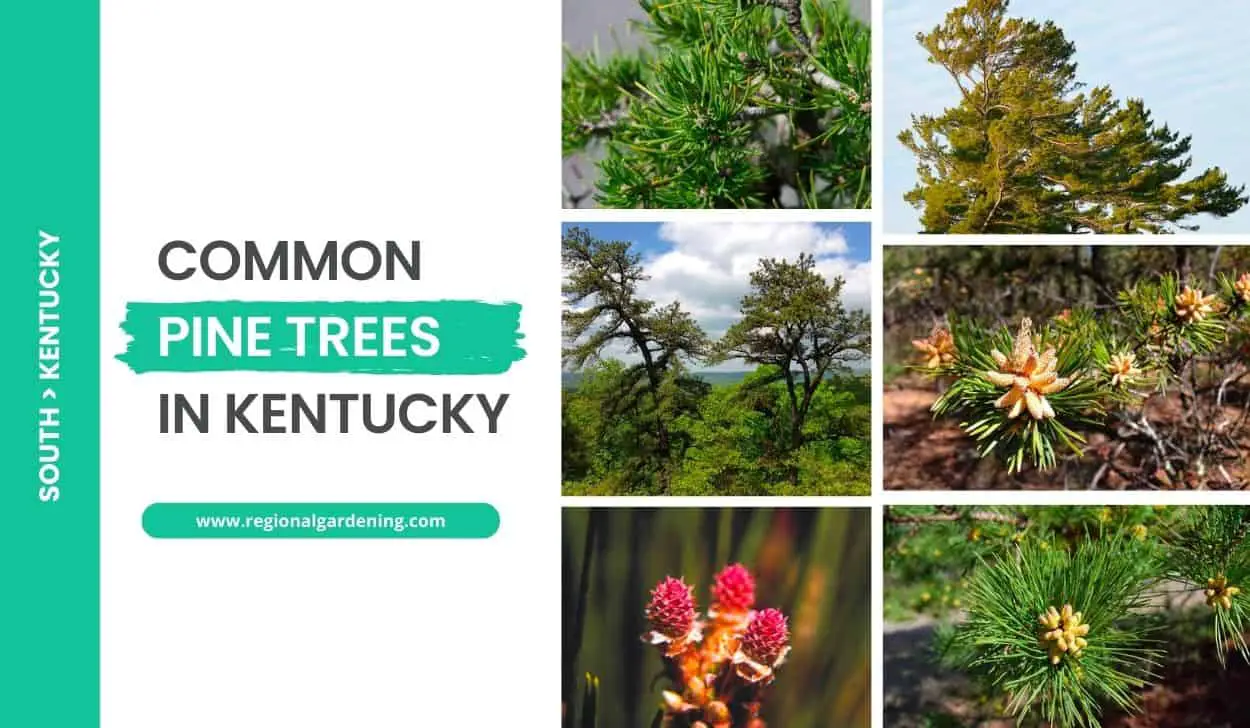
Various species of non-native, naturalized pine trees can be found in Kentucky’s bluegrass and diverse wilderness. While these coniferous titans are not native to Kentucky, they have gradually become an important part of the state’s ecosystem. Although no natural variety of the roughly 95 pine species is found in Kentucky, certain types have naturalized and adapted exceptionally well.
Despite their general intolerance for shade, these non-native pines have demonstrated impressive resilience and adaptability across a broad spectrum of conditions and soil types in Kentucky.
Let’s begin with the Eastern White Pine, the most common among all the pine trees in Kentucky.
1. Eastern White Pine
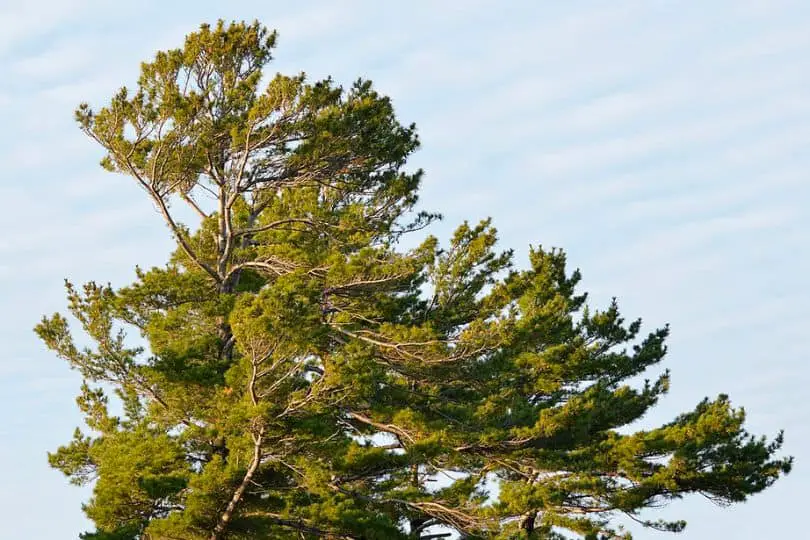
- Scientific Name: Pinus strobus
- Common Name(s): Eastern White Pine
- Mature Height: 50 to 80 feet tall in the landscape; can exceed 150 feet tall in the wild
- Native Region: Northeastern U.S., following the Appalachians south
- Flowers: Monoecious; male flowers are yellow and clustered; female flowers are pink
- Fruit: Ornamental, 3- to 7-inch-long hanging cones are pale brown at maturity and resinous
- Uses: Ornamental tree, specimen plant, background plant; historically used for shingles, ship masts, and lumber
Eastern White Pine (Pinus strobus) is a tree that is widely seen in Kentucky gardens. It has a delicate appearance due to its graceful habit and long, everlasting needles, making it one of the most appealing evergreens. It is commonly planted as an ornamental tree in Kentucky, and its usual applications include being a specimen or background plant. The tree grows in a pyramidal pattern, with layers of branches coming from the trunk at right angles, finally forming a flat-topped shape.
This evergreen flourishes best in full sun, fertile, moist, somewhat acidic soil. While it will tolerate moderate shade, it will struggle in saturated, hot, dry, infertile, compacted, alkaline, or heavy clay soils. Eastern White Pine is vulnerable to a variety of problems, including white pine decline, road salt damage, air pollution, and diseases like white pine root decline and white pine blister rust. Because gooseberry and wild currant plants harbor rust in Kentucky settings, they should be removed from the planting area.
The tree’s flowers are monoecious, having yellow, clustered male flowers and pink female flowers. At maturity, its beautiful cones are 3 to 7 inches long, hanging, and pale brown. The leaves are long (4-inch), blue-green needles that fall after two or three years, turning yellow in early fall. It is a fast-growing tree that can reach 50 to 80 feet in height with a spread of 20 to 40 feet in landscapes.
Historically, wood from Eastern White Pine trees in Kentucky has been valued for its lightness, strength, and resistance to warping. It was utilized for a variety of applications, including roofing and ship masts. The significance of the tree in American history is acknowledged, as it was an important resource for early colonists and played a role in events like as the American Revolution.
Eastern White Pine may be a good huge background screen in modern Kentucky gardens if planted in the right position and tolerates shearing well. Pruning should be done with caution, ensuring that it is done after new growth has begun and avoiding pruning back to bare wood.
2. Virginia Pine
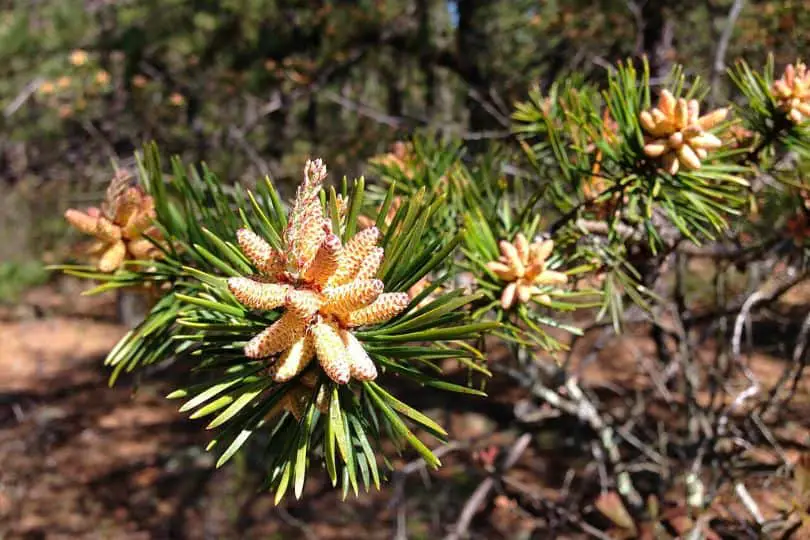
- Scientific Name: Pinus virginiana
- Common Name(s): Virginia Pine
- Mature Height: 15 to 40 feet tall with a spread of 10 to 30 feet (slow growth rate)
- Native Region: New York to Alabama
- Flowers: Monoecious. Male flowers are orange-brown; female flowers are pale green.
- Fruit: Cones, borne in groups of two to four or singly, 1½ to 3 inches long. Dark brown at maturity with a prickly appendage.
- Uses: Popular Christmas tree species in the South, known for taking over abandoned land, and used for landscaping due to its rugged character.
The Virginia Pine, scientifically known as Pinus virginiana, is a peculiar tree with a gnarled and twisted trunk that lends it a rugged appearance ideal for a variety of environments. Despite some people’s dislike for it, it is a common choice for a Christmas tree in the South. This pine species thrives in unfavorable environments, particularly heavy clay soils where few other plants can grow, making it resistant to a variety of stresses.
The Virginia Pine, which is native to a wide range of states from New York to Alabama, has a growth pattern that is distinguished by a broad, open pyramid while young, changing into a scrubby shape with long limbs as it ages. The tree grows slowly and normally reaches a height of 15 to 40 feet with a spread of 10 to 30 feet. The needles are 112 to 3 inches in length and are yellow-green to dark green, remaining on the tree for three to four years.
Virginia Pine is monoecious, producing orange-brown male blooms and pale green female flowers. The cones, which mature to a dark brown color, are 112 to 3 inches long and have a thorny appendage. These cones remain on the tree for eight or more years, adding to its distinct appearance. Notably, the low branches persist, making it a popular Christmas tree in the South.
This pine species is hardy in USDA Zone 4 and tolerant to a variety of soil conditions with the exception of alkaline. However, it is vulnerable to Diplodia tip blight, pine wood nematode, and southern pine beetles, which have become a severe pest, particularly in eastern Kentucky.
Virginia Pine is noted for reclaiming abandoned ground and holding it for 75 years before being supplanted by other species. Despite its brittle wood and weak wood, it has found success in Kentucky settings, with national champion trees in Madisonville, Ky., and Jefferson County, Ala. Pruning or shearing is frequently used to improve the shape of a tree for use as a Christmas tree.
3. Shortleaf Pine
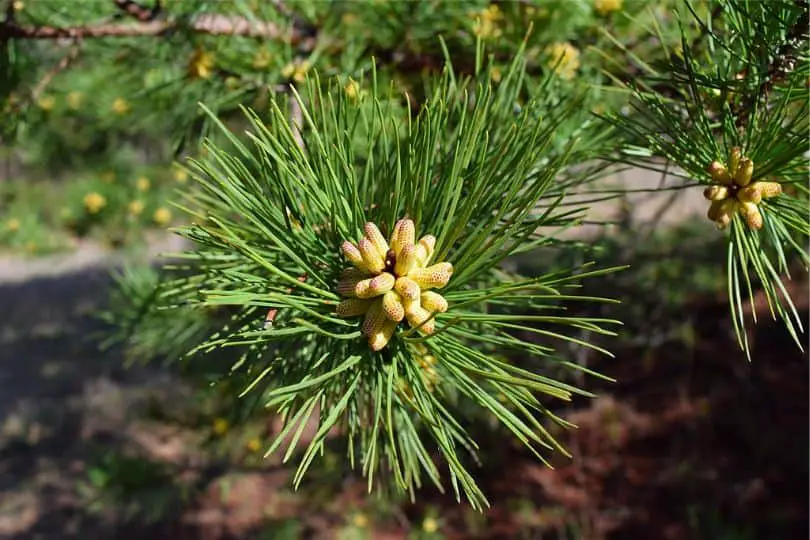
- Scientific Name: Pinus echinata
- Common Name(s): Shortleaf Pine
- Mature Height: 50 to 100 feet tall with a diameter of 2 to 3 feet
- Native Region: Eastern United States
- Flowers: Monoecious. Male flowers are yellow; female flowers are red to purple.
- Fruit: Cones, 1.5 to 2.5 inches long, with small prickles on the scales.
- Uses: Timber production, wildlife habitat, and landscaping.
The Shortleaf Pine (Pinus echinata) is a prominent pine species with mature heights ranging from 50 to 100 feet and diameters ranging from 2 to 3 feet. This pine tree is native to the eastern United States and is appreciated for its lumber production, making it a significant resource for a variety of industries. It grows with a straight trunk and an open, rounded crown, giving it a traditional pine tree shape.
Shortleaf Pine is a monoecious species, with male blooms that are yellow and female flowers that are red to purple. The 1.5 to 2.5-inch-long cones have microscopic prickles on the scales, giving the tree a characteristic feel. These cones are important for reproduction and contribute to the overall aesthetic appeal of the tree.
This pine species is used in landscaping because of its straight trunk and open crown, which make it an appealing choice. It also provides as vital wildlife habitat, offering shelter and food to a variety of species. The Shortleaf Pine is commonly found in mixed pine-hardwood forests in its natural environment, indicating its resilience to a wide range of ecological circumstances.
Shortleaf Pine trees in Kentucky terrainrequires full sun exposure for best growth. It is low-maintenance and adapts to a wide range of soil types, which contributes to its popularity in both natural and cultivated environments. While it is not as popular as a Christmas tree as other pine species, its value in lumber production and ecological balance gives it an important presence in Kentucky gardens and forests.
4. Loblolly Pine
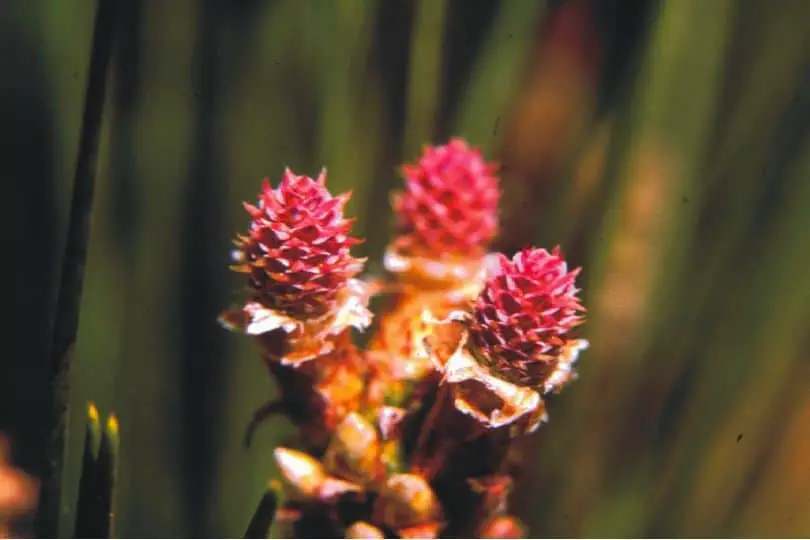
- Scientific Name: Pinus taeda
- Common Name(s): Loblolly Pine
- Mature Height: 60 to 100 feet tall
- Native Region: Southeastern U.S., including Kentucky
- Flowers: Monoecious; male flowers are yellow and clustered; female flowers are reddish
- Fruit: Cones are 3 to 6 inches long, brown when mature, and contain large seeds
- Uses: Timber production, lumber, paper pulp; also planted for erosion control and wildlife habitat
The Loblolly Pine, technically known as Pinus taeda, is a famous tree in Kentucky gardens, prospering in the United States’ southeastern region. It is notable for its large height, which can range from 60 to 100 feet, making it a useful species for lumber production. This evergreen tree has a straight trunk and a pyramidal structure, which provides plenty of shade as well as a distinctive appearance in the landscape.
Loblolly Pine is native to the Southeastern United States, including Kentucky, and is adaptable to a variety of soils, but it prefers well-drained, acidic soils for best growth. It has a moderate growth rate and is frequently used in reforestation operations due to its capacity to establish itself quickly in damaged regions. This plant is important in wildlife habitat because it provides shelter and food for a variety of animals.
The tree produces monoecious flowers with reddish female flowers and yellow, clustered male flowers. When ripe, the cones measure 3 to 6 inches in length and contain big seeds. Loblolly Pine is an important wood resource that produces lumber and paper pulp. Its timber is sturdy and versatile, making it appropriate for a variety of building and manufacturing applications.
Loblolly Pine trees in Kentucky, with its deep root structure that helps maintain soil on slopes, can be carefully planted in Kentucky settings for erosion prevention. It also contributes to the region’s general biodiversity by providing habitat for species.
While it is relatively low-maintenance, providing adequate spacing and letting enough sunlight can help it develop. Pruning may be required as the tree ages to shape and remove lower branches.
5. Pitch Pine
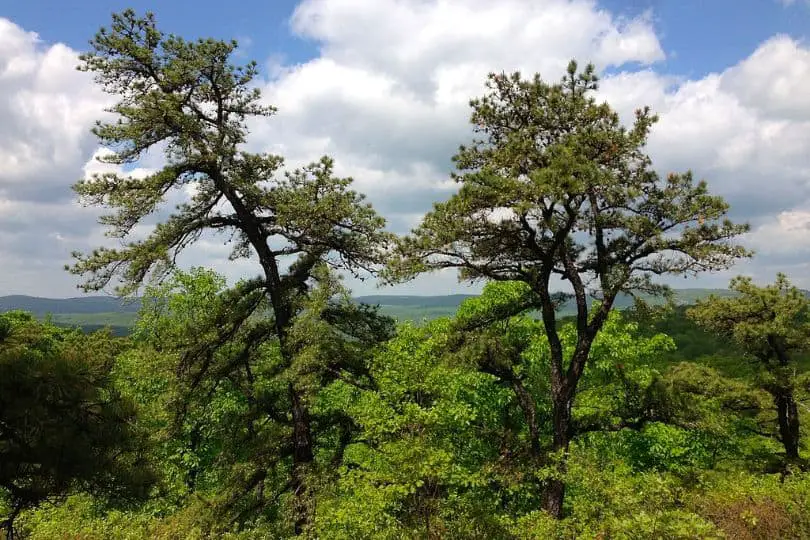
- Scientific Name: Pinus rigida
- Common Name(s): Pitch Pine
- Mature Height: 40 to 70 feet tall
- Native Region: Eastern U.S., including Kentucky
- Flowers: Monoecious; male flowers are yellow; female flowers are reddish
- Fruit: Cones are 2 to 4 inches long, dark brown, and armed with prickles
- Uses: Timber, fuelwood; ecological value for wildlife habitat and soil stabilization
The peculiar features and ecological value of Pitch Pine, scientifically known as Pinus rigida, beautify Kentucky gardens. The mature height of this evergreen tree, which is endemic to the eastern United States, including Kentucky, ranges from 40 to 70 feet. It has an uneven, beautiful growth habit with twisted branches and dark green needles, which contributes to its distinct visual appeal.
Pitch Pine thrives in a wide range of soil types, although it is especially well-suited to sandy and acidic soils. Because of its resilience to less productive and disturbed environments, it is a valuable plant for ecological restoration initiatives. Because of its deep roots, this tree performs an important function in soil stabilization, particularly in places prone to erosion.
The male blooms are yellow and crowded, and the female flowers are reddish. The cones, which are 2 to 4 inches in length, are dark brown and covered in prickles. Because of its resinous nature, this pine is valuable for its lumber, which provides wood good for construction and fuelwood. Its resin has traditionally been utilized for a variety of applications, including waterproofing and sealing.
Pitch Pine trees in Kentucky provide ecological benefits by giving wildlife habitat. Its branches and needles provide refuge for birds, while the seeds provide food for a variety of animals. This makes it an important addition to the region’s biodiversity. While low maintenance in general, pruning on a regular basis may be advantageous for shaping and eliminating dead or congested branches.
Pitch Pine, with its rough beauty and ecological significance, exemplifies Kentucky’s plant life’s diversity and resilience. Its versatility, combined with its economic and ecological importance, distinguishes it as a notable presence in both natural and controlled landscapes across the state.
6. Mugo Pine

- Scientific Name: Pinus mugo
- Common Name(s): Mugo Pine, Mountain Pine
- Mature Height: 2 to 20 feet tall, depending on the variety
- Native Region: Mountainous regions of Central and Southern Europe
- Flowers: Monoecious; male flowers are yellow; female flowers are reddish
- Fruit: Cones are small, 1 to 2 inches long, and brown
- Uses: Ornamental landscaping, ground cover, bonsai; soil stabilization in alpine regions
Mugo Pine, scientifically called as Pinus mugo, offers alpine appeal to Kentucky gardens with its compact and adaptable form. While the mature height of this evergreen pine can range from 2 to 20 feet depending on the species, it is a popular choice for attractive landscaping, particularly in colder climes.
Mugo Pine is native to the hilly regions of Central and Southern Europe and is well adaptable to a variety of soil conditions. Its dense, low-growing nature makes it an ideal choice for ground cover, and it’s frequently used in rock gardens or on slopes. The flexibility of the tree extends to a wide range of garden styles, from conventional landscapes to Japanese-inspired bonsai masterpieces.
The male blooms are yellow and crowded, and the female flowers are reddish. The little brown cones, about 1 to 2 inches in length, add to the overall aesthetic appeal. The compact stature and slow growth rate of Mugo Pine make it an excellent choice for smaller gardens or as a focus point in bigger landscapes.
Mugo Pine offers both attractive and functional benefits in Kentucky settings. Its evergreen nature provides visual interest all year, and the tree’s versatility allows it to thrive in a variety of garden settings. It helps with soil stabilization, avoiding erosion on slopes, and contributing to the overall health of the garden as a ground cover.
Pruning on a regular basis might assist keep its shape and size under control. The versatility of this pine extends to its use in container gardening, making it a popular choice for those looking for a lively and visually appealing addition to patios or balconies.
7. Ponderosa Pine
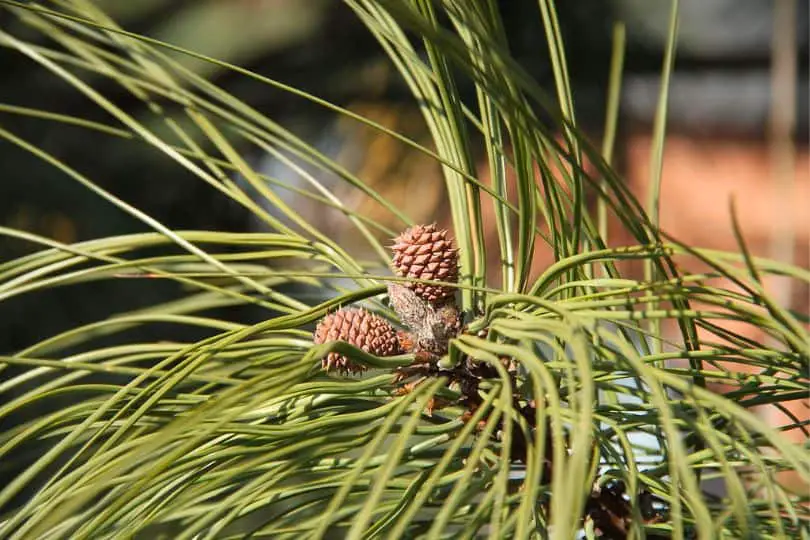
- Scientific Name: Pinus ponderosa
- Common Name(s): Ponderosa Pine
- Mature Height: 60 to 200 feet tall with a diameter of 2 to 6 feet
- Native Region: Western North America
- Flowers: Monoecious. Male flowers are yellow to orange; female flowers are red to purple.
- Fruit: Cones, 3 to 6 inches long, with a characteristic prickle on each scale.
- Uses: Timber production, landscaping, and erosion control.
With a mature height of 60 to 200 feet and a diameter of 2 to 6 feet, the Ponderosa Pine, technically known as Pinus ponderosa, commands a majestic presence. This classic pine tree, native to western North America, has a tall, straight trunk with a crown that varies from open and uneven in youth to becoming more cylindrical and dense with age.
Ponderosa Pine is a monoecious plant with male flowers that range from yellow to orange and female flowers that range from red to purple. The cones are 3 to 6 inches long and have a distinctive prickle on each scale, offering visual appeal as well as a layer of protection to the seeds within.
Ponderosa Pine, with its amazing size and dignified look, finds use in lumber production, offering high-quality wood for a variety of purposes. Aside from its economic importance, this pine species is a popular choice for landscaping, particularly in areas with favorable weather. It is useful in environmental conservation efforts because it not only looks nice but also helps with erosion management.
Ponderosa Pine trees in Kentucky may necessitate careful consideration of soil and climate conditions in local environments. While it is well-suited to well-drained soils and can survive a variety of climates, careful care, including adequate water and sunlight, improves its cultivation success.
Despite the fact that it is not native to Kentucky, its adaptability and stunning appearance make it a desired addition to gardens, parks, and other cultivated settings, where its towering stature and characteristic cones can be enjoyed.
Similar Articles
- Maple Trees In Kentucky
- Dogwood Trees In Kentucky
- Berry Trees In Kentucky
- Oak Trees In Kentucky
- Hickory Trees In Kentucky
- Cypress Trees In Kentucky
- Ash Trees In Kentucky
- Elm Trees In Kentucky
- Magnolia Trees In Kentucky
- Birch Trees In Kentucky
- Cedar Trees In Kentucky
- Locust Trees In Kentucky
Common Pine Trees In Kentucky – Sources
The Regional Gardening team makes sure that the information in our articles is accurate by only using sources that are known to be trustworthy. Some of these sources are peer-reviewed journals from government agencies, well-known universities, and scientific research organizations.
- Common Kentucky Trees, Department of Forestry & Natural Sources, University of Kentucky
- Native Trees Of Kentucky, Department of Horticulture, University of Kentucky.
- Trees & Shrubs of Kentucky, Book By Mary E. Wharton and Roger W. Barbour, University Press Of Kentucky


